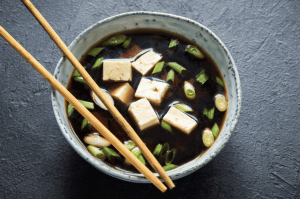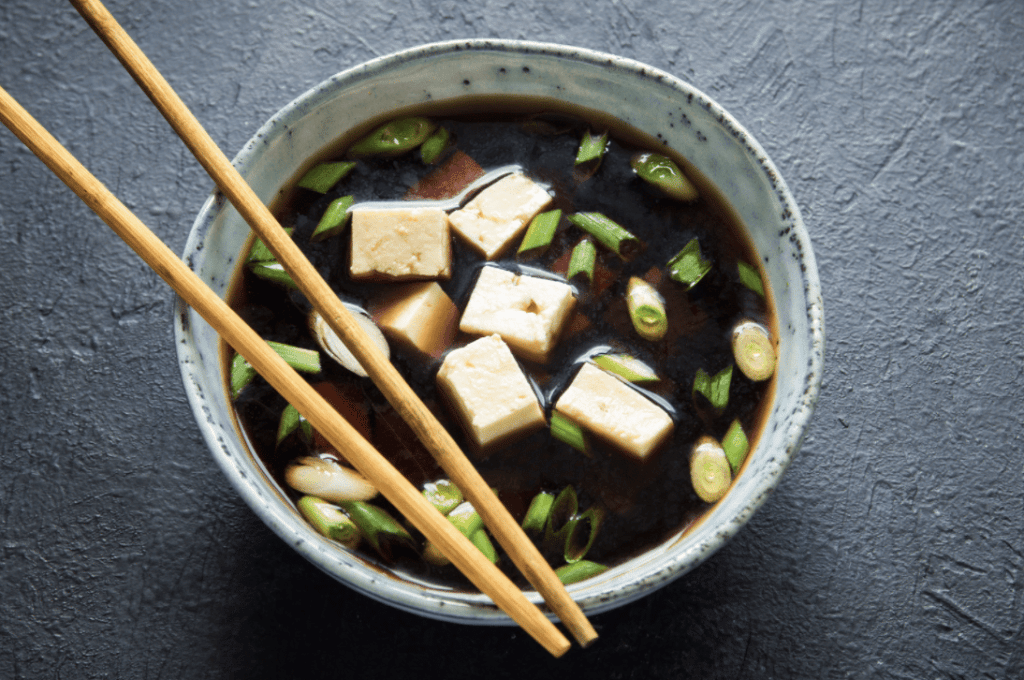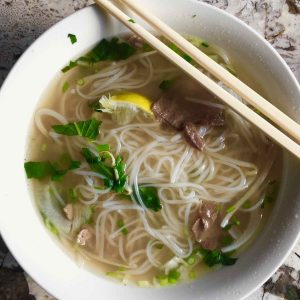What is Miso Soup, Exactly?
Miso is a fermented soybean paste from Japan used as a seasoning throughout Asian cuisine.
If you’ve ever dined at an Asian restaurant or ordered takeout, chances are you’ve spotted miso soup as an appetizer. But what is miso soup? What does it taste like? And what the heck is miso anyway?
What is Miso?
Miso is a fermented soybean paste from Japan used as a seasoning throughout Asian cuisine. Miso can be found in things like soups, salad dressings, pickles, and marinades. It’s even one of the crucial ingredients in soy sauce. The paste is made from fermented soybeans and barley or rice malt. The history of miso can be traced to ancient China.
What Exactly is Miso Soup?

Other ingredients, such as tofu, vegetables, and seaweed, can be added, too. This combination of ingredients gives the soup a comforting, savory flavor with a variety of textures.
According to Wikipedia, it’s a Japanese custom that the ingredients are chosen to reflect the seasons and to provide contrasts of color, texture, and flavor. Thus, negi and tofu, a strongly flavored ingredient mixed with a mildly flavored ingredient, are often combined. Ingredients that float, such as wakame seaweed, and ingredients that sink, such as potatoes, are also combined. Ingredients may include mushrooms (nameko or shiitake), potato, taro, seaweed, green laver, onion, common bean, shrimp, fish, clams, and sliced daikon. Typical miso soup recipes contain a small number of additional ingredients beyond dashi stock and miso.
Hearty and robust cold-weather variations may include daikon, deep-fried tofu called abura-age, potatoes, onions, and dark miso varieties. Lighter variations are better suited for spring or summer months and made with ingredients like cabbage, seri, myoga, eggplant.
What Does Miso Taste Like?
Miso is the ultimate reference point for the flavor sensation known as umami. The paste and the soup have a deep savory flavor, with toasty, funky, salty-sweet richness. This umami flavor forms the base of a lot of everyday Japanese cooking.
Health Benefits of Eating Miso Soup
In 2003, researchers at Japan’s National Cancer Centre suggested that “eating three or more bowls of the Japanese delicacy every day could cut women’s risk of developing breast cancer.”
Studies in 2020 have shown that habitual consumption of miso soup has the effect of lowering blood pressure and heart rate, and it has the effect of increasing good bacteria in the intestines and helping prevent constipation.
Miso soup also tends to be relatively low in calories.




